Garden in a dish – by Diane Morey Sitton
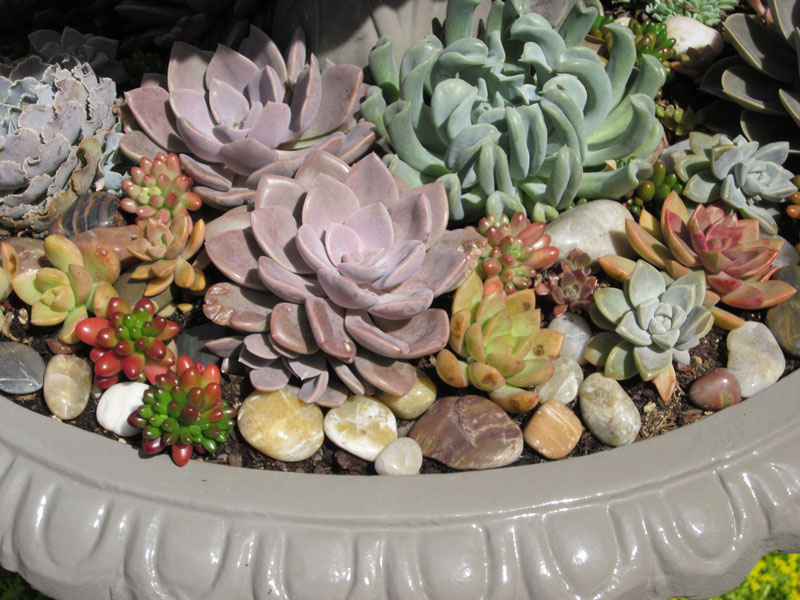
My earliest memory of a dish garden occurred following a family vacation to North Carolina when I was a kid. Dad had the green thumb, but Mom, mesmerized by the verdant mountain creek banks, began collecting moss.
It travelled well, stowed in the family ice chest beside the cold cuts, mayo and other necessities for roadside picnics.

Once back home, Mom arranged her moss collection in a shallow bowl … carefully placing a few prize pebbles she’d plucked from the water’s edge. Despite the fact that the moss garden didn’t fare well in our hot, humid South Florida climate, it was a memorable lesson on how to (or, maybe, how not to) create a mini-landscape in a dish!
And there you have it. Besides being versatile and easy to maintain, dish gardens let folks re-imagine desert terrain, tropical locals, woodland settings, or even lush, mossy creek banks encountered on vacations.
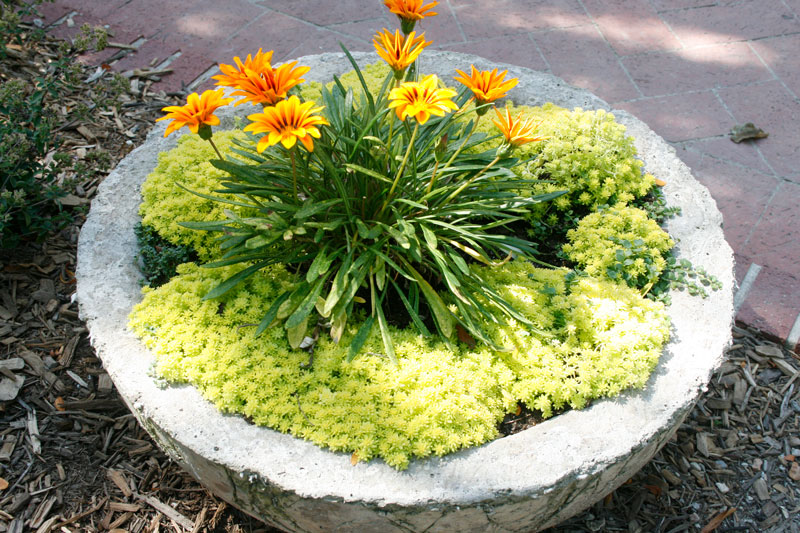
As their name implies, dish gardens are planted in shallow, bowl-like containers. But whether you choose a round terra-cotta dish, a scalloped ceramic bowl, an oblong resin vessel, or a low-sided concrete trough, remember that neutral-colored containers add subtle accents while letting plants be the stars; brightly-hued pots tend to steal the show. When possible, choose a container with a drainage hole. If a matching saucer is available, that’s even better!
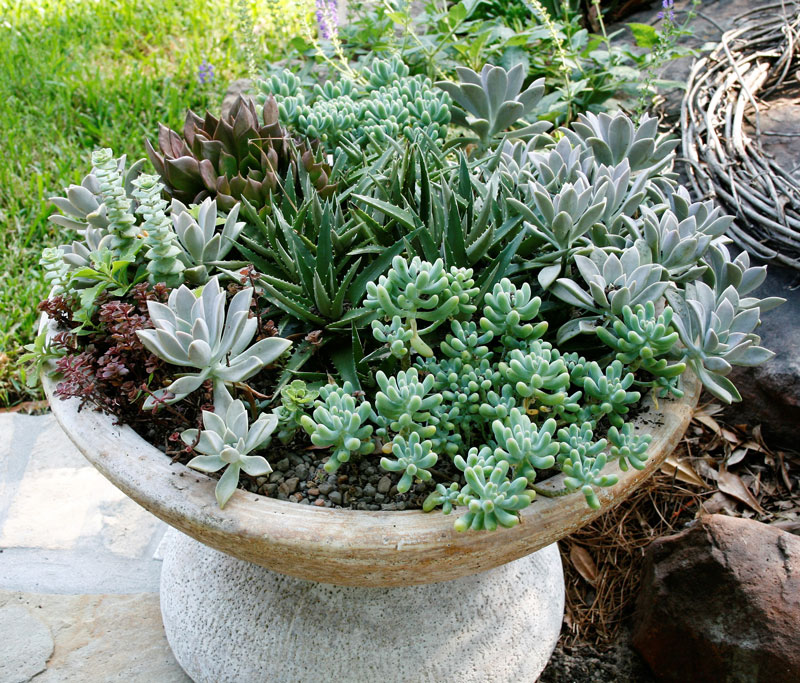
Select plants that have similar growing requirements. The best choices for dish gardens include slow growers, dwarf-like selections, and plants that adapt well to pinching and pruning.
As with any container garden, select a good commercial potting mix. Add sand or perlite to aid in drainage. Use a specially-formulated cacti-growing medium for cacti and succulents.
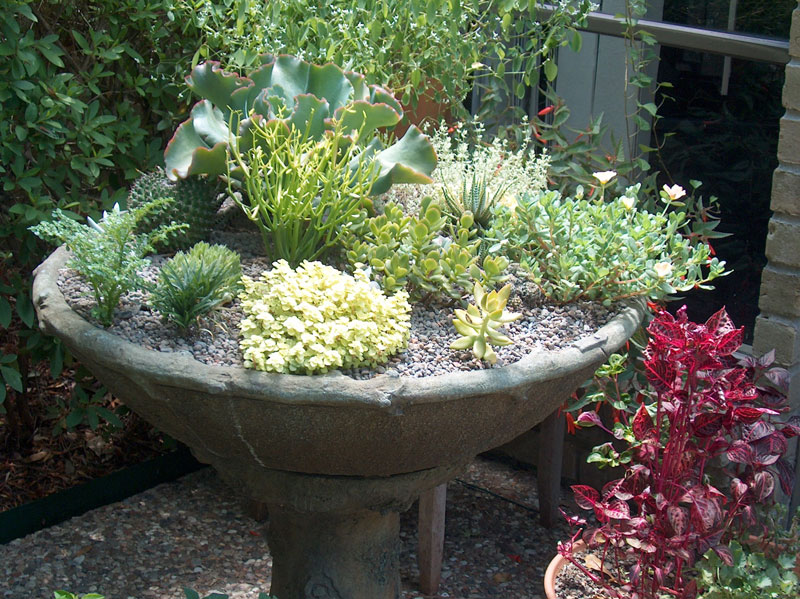
Start by covering the drainage hole with a piece of broken pottery or screen patch. Add a one-inch layer of gravel. Cover the gravel with window screen or weed cloth to hold the soil in place. Fill with potting mix, set the plants in place at the same level they were growing in their original containers, and water to settle the soil. Thereafter, water when needed.
If desired, dress-up the dish garden with a thin layer of fine bark or gravel. Add twigs, stones or miniature animal figures as decorative accents.
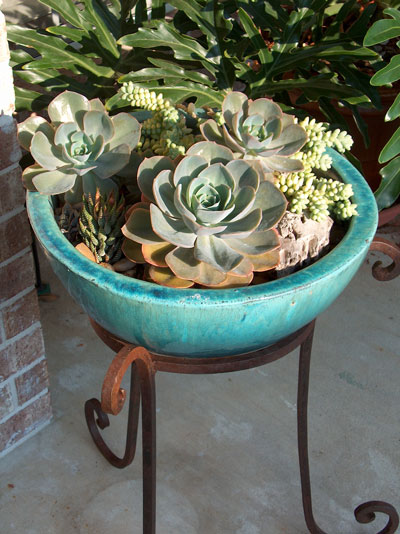
Showcase their colors, shapes and textures by displaying dish gardens on patios, porches, balconies, decks, and even kitchen counters. Place them on pedestals. Use them as centerpieces. Elevate them on plant stands. Position them on the ground beside a gate or garden bench.
Dish gardens can be about creating a point of interest, presenting a plant collection, gardening on a balcony, or even preserving a memory of a time and a place where the water frolicked through the forest and the creek banks were cloaked in moss.
